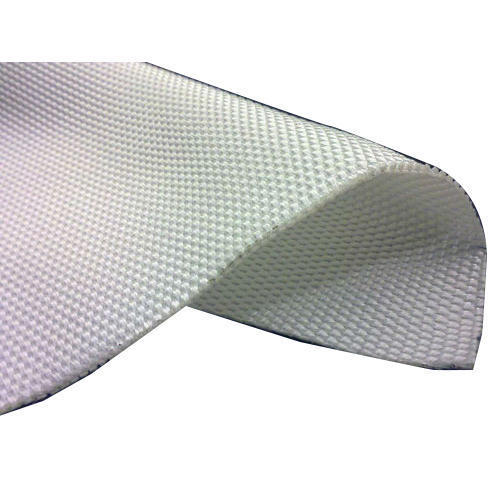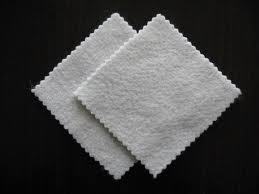- Home Page
- Company Profile
-
Our Products
- Drain Board/ Protection Board
- Geotextile
- Road Geotextile
- Nonwoven Geotextiles
- Railways Geotextile
- Geotextiles For Tunnels
- Non Woven Geo Bag
- Nonwoven Geotextile Fabric
- Coir Mat
- VT 1300 (POLYPROPYLENE / PET WOVEN GEOTEXTILE FABRIC)
- Geo textiles Fabric
- SAMI layer for asphalt reinforcement
- Paving fabric
- Nonwoven Geotextiles Spunlace 100 % Polyester
- Geobags Headers
- Draincells
- Plastic Grass Paverss
- Fibreglass Mesh
- Geomembrane
- Geocomposite Findrain
- Geo Tube
- GeoGrid
- Geocell
- VT STRIP
- Plastic sheets
- Plastic Grass Pavers
- Extra Links
- Contact Us
Geo textiles Fabric
30 INR/Square Meter
Product Details:
- Material polypropylene(pp)
- Georgette Style Woven
- Application Woven geotextiles are some of the strongest fabrics available for erosion control, stabilization, and aggregate separation. Offering an increased grab tensile strength, woven geotextile fabrics offer a robust design that allows them to be successfully implemented in almost any location, including the following: Pavement Roads, Railroads, Structures, Rip Rap.
- Color White
- Click to View more
X
Geo textiles Fabric Price And Quantity
- 1000 Square Meter
- 30 INR/Square Meter
Geo textiles Fabric Product Specifications
- Woven
- White
- Woven geotextiles are some of the strongest fabrics available for erosion control, stabilization, and aggregate separation. Offering an increased grab tensile strength, woven geotextile fabrics offer a robust design that allows them to be successfully implemented in almost any location, including the following: Pavement Roads, Railroads, Structures, Rip Rap.
- polypropylene(pp)
Geo textiles Fabric Trade Information
- 50000 Square Meter Per Month
- 1-2 Days
- Yes
- Free samples are available
- Middle East, Africa, Asia
- All India
- ISO 9001:2015, member of ITTA, MSME and NSIC
Product Description
We are manufacturer & supplier of Woven Geo textiles Fabric From Noida, India. We are supplying Woven Geo textiles Fabric to our valuable clients all across India. We are manufacturing high quality Woven Geo textiles Fabric to give satisfaction to our esteemed clients.We are dealing into geo textile ,geo textiles ,woven geotextile ,non woven geo textile ,drain cell ,draincells ,geo bags and grass paver from Noida,India.
"Virendera Textiles" is one of the leading geo textiles fabric , Our geo textile fabric is manufactured using top-quality raw materials and modern technology. In the manufacturing process, synthetic polymer fibers or filaments are continuously ejected and laid into a moving belt. Then the mass of fibers or filaments are punched using a tool like needle in which filaments are adequately entangled by a series of several needles of small size. The fibers are then welded together by heat or pressure at their point of contact.
Geotextiles are specialized fabrics that are used in civil engineering and construction projects to provide various functions related to soil stabilization erosion control drainage filtration separation and reinforcement They are essentially textile materials made from synthetic polymers or natural fibers designed to interact with soil and other construction materials in order to enhance the performance and longevity of infrastructure projects Here are some key points about geotextile fabrics
Types of Geotextiles Geotextiles are categorized into different types based on their primary functions
- Woven Geotextiles These are made by weaving narrow strips of fabric together creating a strong and durable material They are commonly used for reinforcement and stabilization
- NonWoven Geotextiles These are manufactured by bonding or needlepunching fibers together They are used for filtration separation and drainage purposes
- Knitted Geotextiles These are created by knitting together synthetic yarns and are typically used for soil reinforcement
Functions of Geotextiles
- Filtration Geotextiles act as a barrier that allows water to pass through while preventing the movement of fine particles They are used to prevent soil erosion and maintain the stability of structures
- Separation Geotextiles are used to separate different layers of soil preventing the mixing of materials and maintaining the integrity of the structure
- Drainage Geotextiles can be used to provide drainage paths within soil structures helping to prevent the buildup of excess water pressure that could lead to instability
- Reinforcement Geotextiles can reinforce soil and enhance its loadbearing capacity They are used in applications like road construction embankments and retaining walls
- Erosion Control Geotextiles are used to prevent soil erosion caused by water or wind They stabilize the soil and prevent it from being carried away
Advantages
- Cost Effective Geotextiles can often replace traditional construction materials reducing costs and construction time
- Versatility Geotextiles can be designed for specific functions and conditions making them versatile for various applications
- Environmental Benefits Geotextiles can help reduce the environmental impact of construction projects by minimizing soil erosion and improving water drainage
- Longevity Geotextiles are designed to withstand harsh conditions and have a relatively long service life
Applications
- Road construction and pavement stabilization
- Retaining walls and slopes
- Landfill liners and covers
- Erosion control in riverbanks and coastal areas
- Drainage systems for roads and sports fields
- Geotechnical engineering projects
Selection Criteria The choice of geotextile depends on factors such as the specific function required the site conditions soil type and loadbearing requirements
Installation Geotextiles are usually laid directly on the ground or within soil layers during construction Proper installation techniques are crucial to ensure optimal performance
Geotextiles have proven to be valuable tools in modern construction and civil engineering enhancing the overall efficiency stability and longevity of various infrastructure projects
Specification
|
Length |
10-60 m |
|
Woven |
Yes |
|
Thickness |
8-12 mm |
|
Material |
Polyester |
FAQs of Geo textiles Fabric:
Q: What are the applications of woven geotextiles fabric?
A: Woven geotextiles are used for erosion control, stabilization, and aggregate separation in pavement roads, railroads, structures, and rip rap.Q: What is the material of the geotextile fabric?
A: The material used is polypropylene (pp).Q: What is the style of the geotextile fabric?
A: The geotextile style is woven.Q: What color is the geotextile fabric available in?
A: The color of the geotextile fabric is white.Q: What is the tensile strength of the woven geotextile fabric?
A: Woven geotextile fabrics offer increased grab tensile strength, making them suitable for various applications.Tell us about your requirement

Price:
Quantity
Select Unit
- 50
- 100
- 200
- 250
- 500
- 1000+
Additional detail
Mobile number
Email









